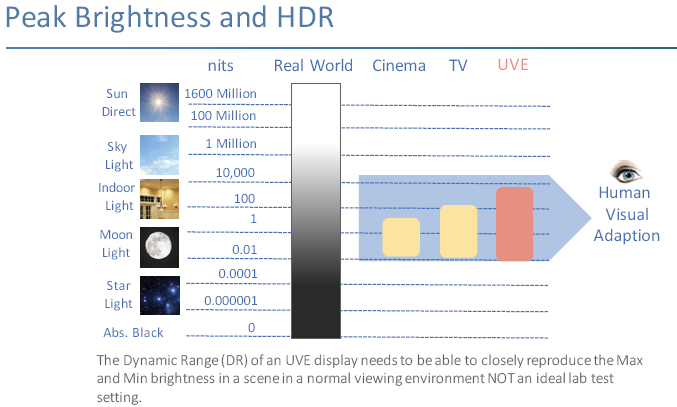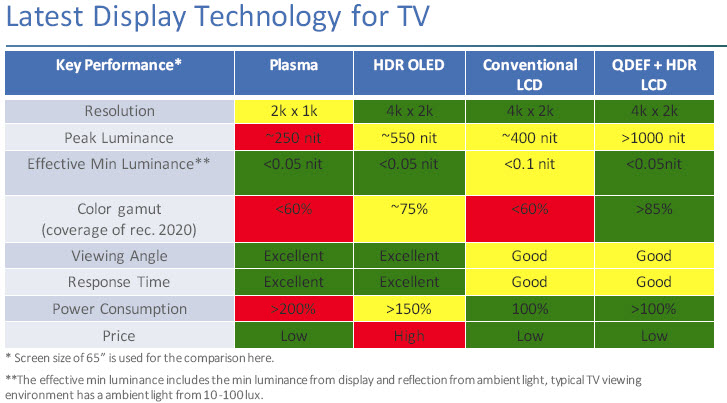
The next speaker was Dr ZhongShen Luo of Nanosys, who talked about quantum dots. First he spoke about the company (we covered this recently in our SID report: QDVision Summarises Quantum Dots). Then he went on to talk about the standards needed to deliver a great consumer experience, especially in TV.
Luo explained how Nanosys developed its film-based approach (QDEF) as it found that glass-encapsulated technologies were tricky from a production point of view, both in making the tubes and developing good finished products.
From the consumer point of view, what do you need? Luo looked at the historic flat panels of PDPs, OLEDs and LCDs. He talked about the disadvantages of OLED and PDP compared to LCD and he covered the 3M research that suggests that consumers value colour more than resolution above a certain point. He also explained the interest in HDR and why it is important for consumers. In the future, the TV will become a systems interface for the home, as well as a video display, he believes. For this, you need HDR, WCG and resolution.
Luo then explained the work that Dolby did to develop the idea of the PQ EOTF, which is designed to allow control of brightness up to 10,000 cd/m². At the dark end, a brightness of 0.001 – 0.01 cd/m² is needed to satisfy 90% of consumers. Although 10K cd/m² sounds like a lot, the blue sky in Las Vegas is 100K cd/m² or so; dramatically different from the 50 cd/m² in a typical cinema. Of course, the human visual system will adapt to only see a limited range out of that.

Luo then explained the range of real world colours that are covered by Pointer’s gamut and that is broadly the same as Rec.2020. sRGB only covers around 70% of Pointer’s gamut.
The question is, how do you make such a display affordable? Luo believes that only QD technology can achieve this. The UltraHD Alliance, UltraHD Blu-ray and ATSC 3 are all using Rec.2020 containers (even if currently they are not requiring full gamut support of Rec. 2020 gamuts).
Luo then explained why there are issues with typical displays: because of a lack of saturation at higher brightness, which stems from a reduced colour volume. Although the full gamut might be available at lower brightness, it can be a challenge to maintain saturation at higher brightness.
How can you deliver HDR? Luo said that local dimming with LCD is a good solution. He also briefly mentioned the development of QDs in the colour filter that was highlighted by Nanosys at SID.

Returning to his chart of different TV technologies, Luo added a new column for the QDEF + HDR combination. Although OLED should have a lower black level, in real world conditions there is some reflection of ambient light, so the reality is around 0.05 nits.
He also showed the results obtained when the firm demonstrated at SID the difference between an LG (OLED) and Samsung (QD) TV – the OLED only had 88% of P3, and 500 cd/m² peak, but the Samsung TV had 96% of P3 and 1200 cd/m² of peak brightness. LG asked the company to cover the name of the OLED TV in the comparison. Power consumption was the same between the two sets.
Luo pointed out that at the moment there is not much content available for HDR and WCG, but the UltraHD Alliance (which Nanosys is a member of) is encouraging the development of specific content.

